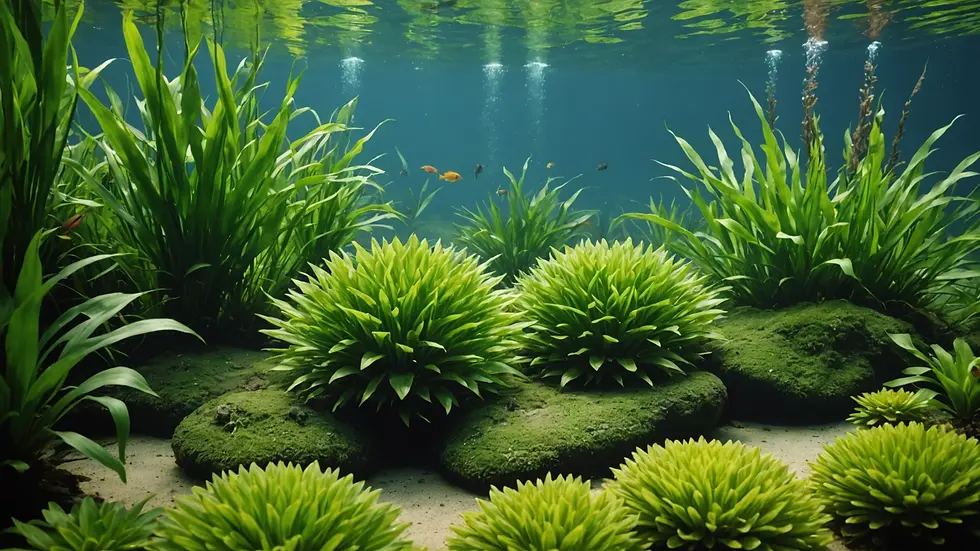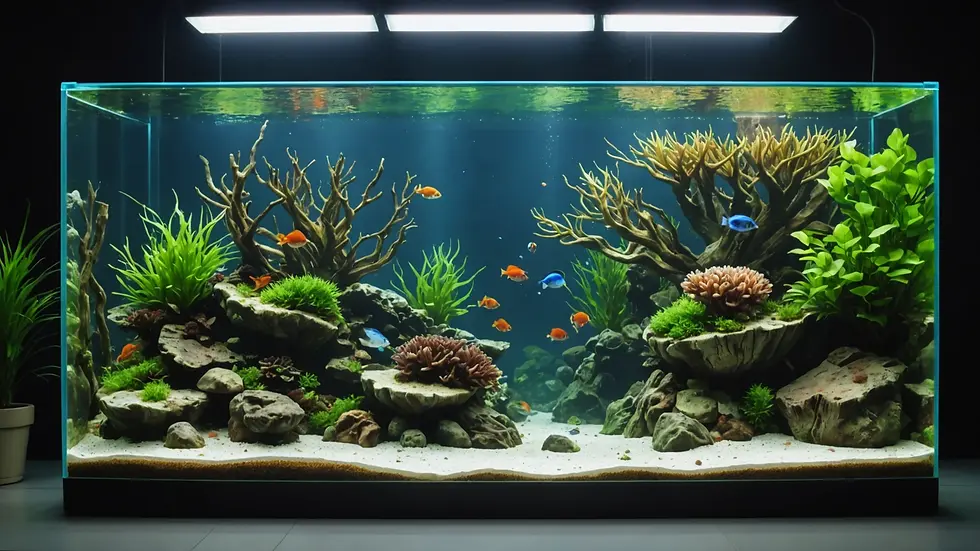The Art of Blending In: Creating Unpredictable Hideaways for Your Fish
- Jyotiraj Borah
- Feb 7
- 3 min read
Creating a thriving environment for your fish requires more than just appropriate care and feeding. An essential aspect of fish husbandry is providing natural hiding spots that cater to their instincts. When fish feel secure and less stressed, they thrive. This post will explore different ways to create these natural hideaways, their benefits, and practical tips to ensure your fish can express their natural behaviors.
Understanding the Importance of Hiding Spots
Fish instinctively seek shelter in their habitats. Hiding spots serve several important purposes:
Protection from Predators: In the wild, fish hide to stay safe. Providing hiding spots mimics their natural environment, helping them feel secure in your aquarium.
Breeding Areas: Many species prefer to spawn in protected spots. By including adequate hiding places, you can encourage natural breeding behaviors in your tank.
Stress Relief: Enclosed spaces reduce stress levels, allowing fish to rest and recover. Chronic stress can lead to health issues, poor feeding behavior, and even premature death.
Social Structures: Some fish form social hierarchies. Hiding spots provide refuge for weaker individuals and help establish pecking orders within groups.
Ensuring a variety of hiding spots can significantly enhance the well-being of your aquatic pets.
Effective Types of Hiding Spots
When considering what makes an effective hiding spot, choose natural, aquarium-safe materials. Here are specific options you can implement:
1. Rocks and Caves
Arranging different sizes of rocks can create caves and crevices perfect for hiding.
Aesthetic Appeal: Natural stone offers an attractive look that imitates underwater landscapes.
Size Consideration: Make sure the rocks are appropriately sized for your fish. For example, larger fish like Oscars need bigger caves, while smaller species prefer smaller spaces.

2. Driftwood
Driftwood offers hiding spots while improving water chemistry by leaching beneficial tannins.
Unique Shapes: Its irregular shapes provide multiple hideaways that enhance the aesthetic of your aquarium.
Preparation: Before adding driftwood, boil it to eliminate potential pests and bacteria.
3. Live Plants
Live plants not only serve as hiding spots but are crucial for your aquarium's ecosystem.
Variety of Options: Tall plants, floating plants, or densely-leaved varieties create numerous hiding opportunities. For instance, Anubias and Java Fern can be used to create a lush environment.
Water Quality Maintenance: Plants absorb harmful toxins and produce oxygen, contributing to healthier water conditions.

4. Artificial Structures
If natural materials aren’t available, or you want something easier to maintain, consider artificial hiding spots.
Diverse Designs: Faux rocks, resin caves, or commercial decorations offer various designs while ensuring safety for your fish.
Natural Appearance: Choose items that resemble natural materials to keep your aquarium visually appealing.
Best Practices for Arranging Hiding Spots
Creating an effective environment requires thoughtful arrangement. Here are two key strategies to enhance your aquarium:
Layering: Create a three-dimensional space by layering hiding spots from bottom to top. This adds depth and encourages exploration.
Grouping: Cluster hiding spots together, rather than scattering them. This fosters social interactions and builds comfort for your fish.
Additionally, it is vital to maintain open areas in your aquarium where fish can swim freely and interact safely. This balance prevents aggression among more territorial species while providing a sense of security.
Maintaining Hiding Spots
Once you've established hiding spots, regular maintenance is key. Keeping them clean helps prevent algae buildup and supports a healthy environment.
Cleaning Routine: Establish a cleaning schedule for both the substrate and hiding spots. Using an aquarium vacuum during water changes is effective for removing debris.
Condition Monitoring: Keep a close eye on the water parameters near hiding spots. Sudden changes in conditions can deter fish from using their chosen shelters.
Adjusting as Needed: If your fish aren’t utilizing certain hiding spots, consider rearranging or replacing them. Fish preferences can change, so flexibility is essential.
Crafting a Natural Landscape
Enhancing both the aesthetics and functionality of your aquarium can be achieved through a natural landscape design.
Theme Selection: Choose a theme that complements the type of fish you keep. For instance, a biotope aquarium imitates a specific habitat, while community tanks can feature mixed designs.
Aquascaping Techniques: Use effective aquascaping techniques to create depth and variety. For example, elevating areas with rocks or driftwood creates space for exploration.

Embracing the Art of Hiding Spots
Creating effective natural hiding spots for your fish not only promotes their health and well-being but also enhances the overall beauty of your aquarium. By using various materials like rocks, driftwood, live plants, and artificial structures, you can provide a safe environment that mimics their natural habitats.
Regular maintenance and adjustments are crucial to ensuring effective hiding spots. With careful planning and attention to detail, you can establish unpredictable hideaways that nurture the behaviors of your fish while enriching the aesthetic of your underwater world. Happy aquascaping!




Comentários